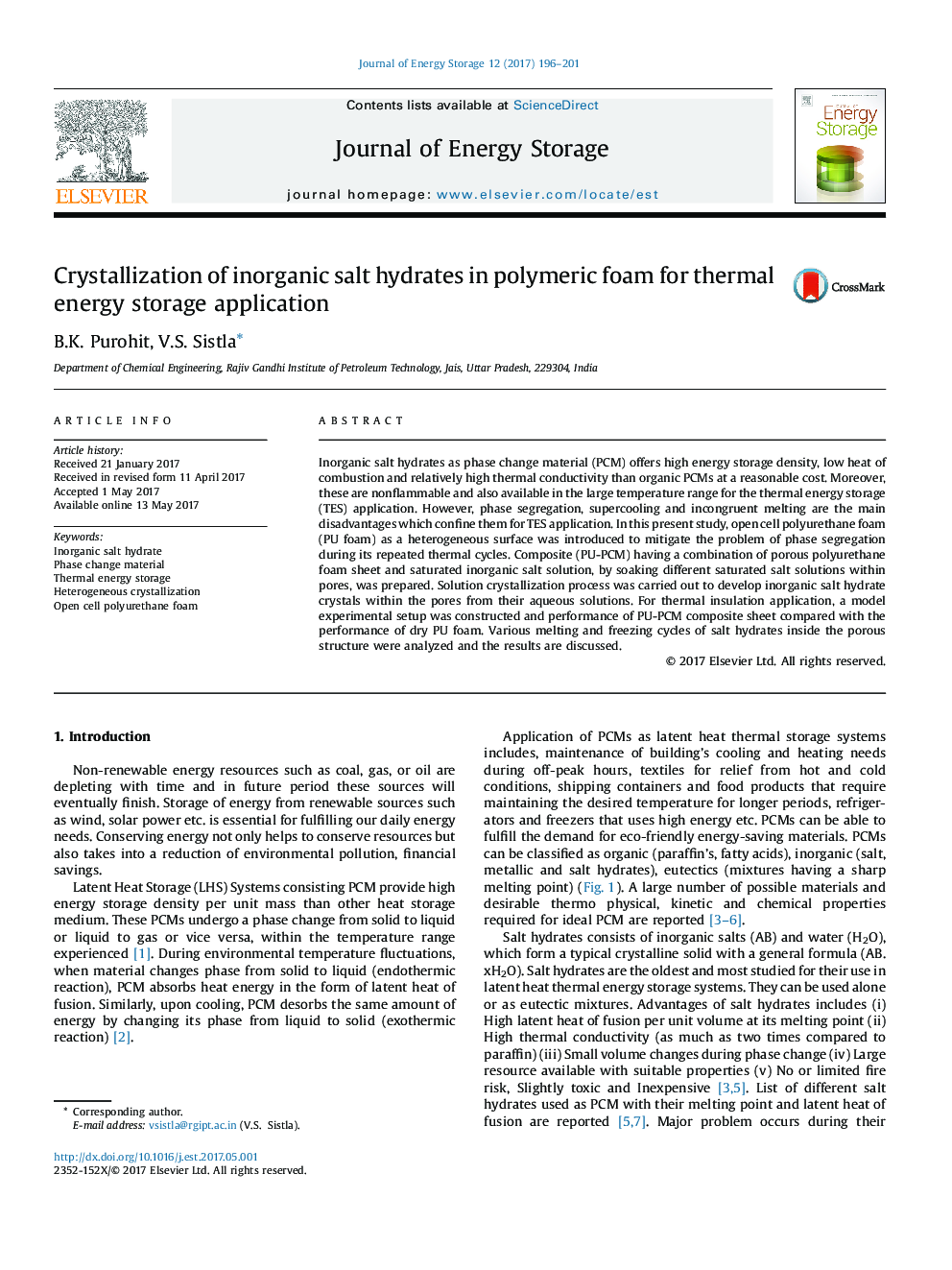| Article ID | Journal | Published Year | Pages | File Type |
|---|---|---|---|---|
| 5127300 | Journal of Energy Storage | 2017 | 6 Pages |
â¢Mitigate the phase segregation of salt solutions by incorporating them into an open cell polyurethane foam (PU Foam).â¢Solution crystallization to produce salt hydrate crystals from different solutions of salts like pure Na2SO4, MgSO4.7H2O, and their mixture.â¢Comparative study for thermal insulation capability of different PU-PCM composite with respect to dry PU foam.
Inorganic salt hydrates as phase change material (PCM) offers high energy storage density, low heat of combustion and relatively high thermal conductivity than organic PCMs at a reasonable cost. Moreover, these are nonflammable and also available in the large temperature range for the thermal energy storage (TES) application. However, phase segregation, supercooling and incongruent melting are the main disadvantages which confine them for TES application. In this present study, open cell polyurethane foam (PU foam) as a heterogeneous surface was introduced to mitigate the problem of phase segregation during its repeated thermal cycles. Composite (PU-PCM) having a combination of porous polyurethane foam sheet and saturated inorganic salt solution, by soaking different saturated salt solutions within pores, was prepared. Solution crystallization process was carried out to develop inorganic salt hydrate crystals within the pores from their aqueous solutions. For thermal insulation application, a model experimental setup was constructed and performance of PU-PCM composite sheet compared with the performance of dry PU foam. Various melting and freezing cycles of salt hydrates inside the porous structure were analyzed and the results are discussed.
